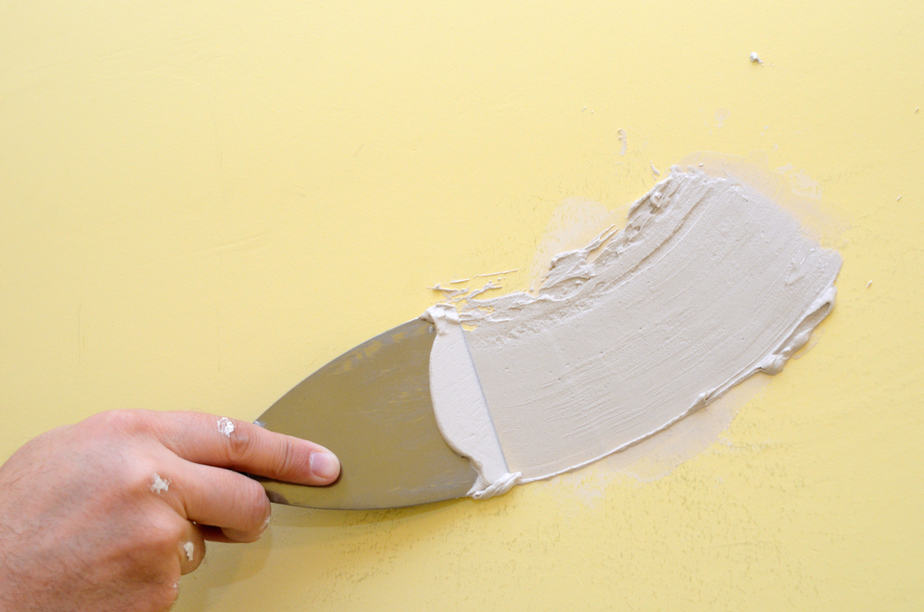Applying spackle to small holes in walls is a common do-it-yourself project. But how long does spackle take to dry? The answer depends on the type of spackle you use and the hole size you’re filling.
If you’re wondering how long spackle takes to dry, the answer is typically 24 hours. However, this can vary depending on the humidity and temperature of your home. If the weather is particularly humid, the spackle may take up to 48 hours to dry completely.
And if it’s cold, it could take even longer. So if you’re in a hurry, be sure to factor in some extra time just in case. Let’s explore different types of spackle, their drying time, and factors to reduce drying time.
Drying Times for Different Types of Spackle
As mentioned earlier, different types of spackle have different drying times. Here is a more detailed look at the drying time for some specific types of spackle:
- Epoxy spackle: Epoxy spackle takes the longest to dry, usually 24 hours to dry and fully cure before it can be painted.
- Vinyl spackle: This type of spackle dries quickly, usually within a few minutes, but it’s recommended to wait for 1-2 hours before sanding and 24 hours before painting.
- Plaster spackle: This type of spackle dries the fastest, usually within 3 hours, but it’s intended only for internal work and doesn’t tolerate dampness.
- Cement-lime spackle: This type of spackle takes 24-48 hours to dry, depending on the thickness of the layer.
Consider the type of spackle you’re using and the environmental conditions before starting your project to ensure that the spackle has enough time to dry and cure properly.
Exploring the Influential Factors of Spackle Drying Time
Accurately assessing the drying time of the spackle is essential for a successful construction project. Spackle is used to fill in small gaps and cracks in walls, and when applied correctly, it should dry quickly. However, the drying time of spackle can be affected by some factors, including:
- The size and depth of the hole or crack: Larger holes and deeper cracks will take longer to dry than small holes and shallow cracks.
- Humidity: High humidity levels can slow down the drying time of spackle.
- Temperature: Lower temperatures can also slow down the drying time of spackle.
- The thickness of the spackle layer: A thicker layer of spackle will take longer to dry than a thinner layer.
On average, spackle will take 1-2 hours to dry. However, it’s worth noting that larger patches or deeper holes may take several hours to dry. Additionally, it can be affected by humidity, which can slow down the drying time.
How Long Does Spackle Take To Curing Completely?
The curing time is needed for the spackle to harden and reach its maximum strength. It is also important for the final finish to be smooth and even.
The curing time can vary depending on the type of spackle, humidity, and temperature. Generally, waiting for 48 hours before sanding and painting is recommended. As we said, it dries after 24 hours. But depending on the deepness, waiting 48 hours before smoothing out the surface for further procedure is safe.
It’s important to remember that the curing time is just as important as the drying time. Even if the spackle looks dry on the surface, it may not be fully cured, and if it’s not fully cured, it may not be as strong as it should be and may not be smooth enough for painting.
Can Spackle and Spar Urethane be Used Together in a Home Improvement Project?
Yes, you can use spackle and spar urethane together in a home improvement project. Spackle is great for patching holes and imperfections in walls, while spar urethane provides a protective finish for wood surfaces. If you need to thin spar urethane for your project, simply follow the instructions on how to thin spar urethane provided by the manufacturer.
Tips For Encourage Spackle To Dry Fast
Here are some tips and tricks to help you work with spackle more effectively and ensure that it dries and cures properly:
- Use a putty knife to apply the spackle in thin layers, and this will help the spackle dry faster.
- Keep the room well-ventilated while the spackle is drying to promote faster drying time.
- Use a fan to circulate air around the spackle drying area. This will help to reduce humidity levels.
- Use a dehumidifier if the humidity is high.
- Avoid sanding or drilling the spackle until it’s fully dry and cured.
How To Apply Spackle On The Wall?
Conclusion
The drying time of the spackle can vary depending on several factors, including the type of spackle used, the size and depth of the hole or crack, and the humidity and temperature of the environment.
On average, spackle will take 1-2 hours to dry. However, some types of spackle, like epoxy spackle, may take up to 24 hours to dry and fully cure before it can be painted.
Take the time to consider the type of spackle you’re using and the environmental conditions before starting your project to ensure that the spackle has enough time to dry and cure properly.
Remember that the curing time is just as crucial as the drying time, and always check the instructions on the spackle product you are using for more specific information.

